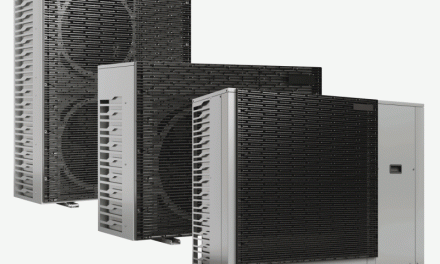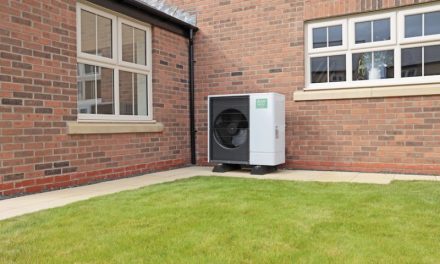 Huge energy and carbon savings can be achieved by investing in modern compressors. However, ultimately the efficiency of any machine is dependent on where it’s sited, and the layout and condition of the pipework. Mattei’s Andy Jones explains
Huge energy and carbon savings can be achieved by investing in modern compressors. However, ultimately the efficiency of any machine is dependent on where it’s sited, and the layout and condition of the pipework. Mattei’s Andy Jones explains
Due to the significant advancements that have been made in compressor technology, significant energy and carbon savings can be made by replacing an aging machine with a modern equivalent. However, if the compressor’s pipework system is not properly designed, and/or the compressor itself is not properly sited, then the full potential for energy savings will not be realised.
In order to achieve this, first take a look at the environmental conditions. Some compressors will be housed in their own controlled, purpose built plant room. However, it’s not uncommon to find machines sited on a factory floor, where environmental factors can affect efficiency.
Go with the flow
Air flow into the compressor is a key consideration. It’s important for the air to be as cool as possible, as the cooler the air, the denser it becomes, making it more efficient. If the air being drawn into the compressor is warm – perhaps because it’s sited next to a boiler – the machine will have to work harder, reducing efficiency as well as the lifetime of its parts.
The air also needs to be reasonably clean and free from solid and gaseous impurities – and this can actually be relatively simple. For example, in one application Mattei found a compressor’s air intake was facing a sand blaster – simply rotating it 180° dramatically reduced the dust particles entering the compressor and blocking the intake filter. If relocating the compressor isn’t feasible then additional filtration can be used.
There also needs to be sufficient air flow around the compressor. In some compressor houses there is just a small air vent, which might not provide an adequate volume of air. In some applications the door to the compressor house is left open to try and resolve this – but this might not provide suitable air flow, and could actually lead to pollutants being drawn into the air intake filter, blocking it prematurely. Air flow should be unrestricted and where intake ducting is used it should have a sufficiently large cross sectional area to avoid excessive pressure drops – a pressure drop of 10millibar reduces flow by one percent.
System design
The distance between the compressor and where the compressed air is actually used can also have important implications – so the system must also be designed well.
With the UK’s continued focus on energy efficiency in mind, it is possible that a new compressor installation will also include heat recovery. Compressors generate a lot of heat, and in recent years this has been recovered and put to good use in the production process – for example, for water heating. Again, this needs careful consideration if it is to be an efficient addition to the system. If the hot water is used across the other side of the factory to where the compressor is sited, for example, this isn’t going to be efficient.
In this instance it’s worth consideration being given to relocating a compressor for the purposes of heat recovery. If this isn’t possible then the heat could still be used for localised space heating.
It’s also important to assess the pipework, and upgrade it if necessary. Unfortunately when new compressors are installed this doesn’t always happen, meaning any energy efficiency savings could be negated. For example, if there is rust and corrosion on the pipework Mattei recommend upgrading it, as this type of damage can alter the efficiency of a system.
Pipe runs should be suitably sized for the air delivery capacity of the compressor/s, with bends kept to an absolute minimum. Although smaller diameter pipe may save on capital cost, greater pressure drops in the system would lead to a higher operating cost. For systems where the point of use and the compressor are relatively close then a single line could be chosen, whereas for larger systems with many points of use then a ring main would be preferable.
In terms of pipework material, aluminium could be considered a better option than steel – it has very good properties in terms of minimising friction and reducing energy losses, and is also generally easier and quicker to install.
If existing pipework is being used, it is absolutely essential to check for leaks. In many companies in excess of 30% of air generated is wasted through leaks in the system – so it would be an entirely false economy to install a new, energy efficient compressor without firstly fixing any leaks that might exist.
Summary
While new compressors can dramatically improve energy efficiency, they need to be installed and sited correctly in order to achieve optimum savings. With this in mind Mattei would always recommend that a site assessment, data logging/energy audit and leak detection survey are carried out before a new compressor is installed, which will help to identify any issues.
Mattei
T: 01789 450 577





